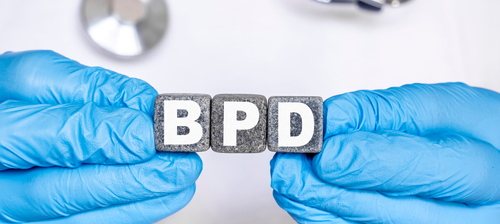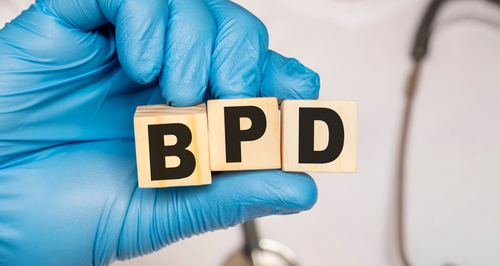
Borderline personality disorder (BPD) is listed in the Diagnostic and Statistical Manual of Mental Disorders, Fifth Edition (DSM-5) as a chronic, mental disorder. As defined by the National Institute of Mental Health (NIH), “borderline personality disorder is an illness characterized by an ongoing pattern of varying moods, behavior, and self-image.” Individuals with borderline personality disorder feel prolonged, intense emotions and are unable to return to a neutral emotional baseline after facing an emotionally charged experience in a timely manner. This can affect all areas of one’s life as the duration it takes an individual with BPD to process, integrate, and recover from emotional challenges is elongated. Individuals with borderline personality disorder often struggle with relationship issues, lack self-esteem, have a poor self-image, and have an inability to appropriately self-regulate. Borderline personality disorder is not an uncommon disorder, as the National Institute of Mental Health (NIH) estimates that 1.4% of the adults in America experience BPD.
Diagnostic Criteria
There is no definitive medical test to diagnose borderline personality disorder. According to the Diagnostic and Statistical Manual of Mental Disorders, Fifth Edition (DSM-5), borderline personality disorder is diagnosed when an individual experiences “a pervasive pattern of instability of interpersonal relationships, self-image and affects, and marked impulsivity beginning by early adulthood” and must experience five or more of the following symptoms in a variety of contexts:
- Emotional instability
- Feelings of emptiness
- Efforts to avoid abandonment
- Impulsive behaviors
- Identity disturbances
- Inappropriate, irrational and/ or intense bouts of anger
- Transient paranoid and/ or dissociative symptoms
- Unstable interpersonal relationships
- Suicidal and/ or self-harming behaviors
Due to its illusive nature, borderline personality disorder can be extremely difficult to diagnose. As such, to obtain the most accurate mental health diagnosis it is imperative to undergo a comprehensive evaluation that is conducted by one or more qualified mental health professionals.
What You Can Do
Despite the challenges that BPD can bring to a relationship maintaining self-care practices and utilizing effective communication skills are essential for both partners, and integral to the health of the relationship. Consider the following suggestions to help you navigate your partner’s BPD:
- Increase empathy: learn as much as you can about borderline personality disorder to increase empathy in your partnership
- Remain calm: do not engage in serious conversations unless your partner is calm
- Be supportive: provide your partner with emotional support and understanding, and be sure to let your partner know that you fully support their treatment
- Avoid shame and blame: remember that labeling and blaming is not productive nor will it help to de-escalate or resolve any situation
- Take threats seriously: threats of self-harm should not be minimized or ignored, and should prompt you to seek immediate professional help
It is important to bear in mind that although BPD is a chronic condition, with proper support, is it possible for an individual diagnosed with borderline personality disorder to learn strategies, techniques, and tools to effectively manage the symptoms associated with BPD, reducing the severity of symptoms experienced and increasing one’s quality of life.
Disclaimer:
The information above is provided for the use of informational purposes only. The above content is not to be substituted for professional advice, diagnosis, or treatment, as in no way is it intended as an attempt to practice medicine, give specific medical advice, including, without limitation, advice concerning the topic of mental health. As such, please do not use any material provided above to disregard professional advice or delay seeking treatment.









